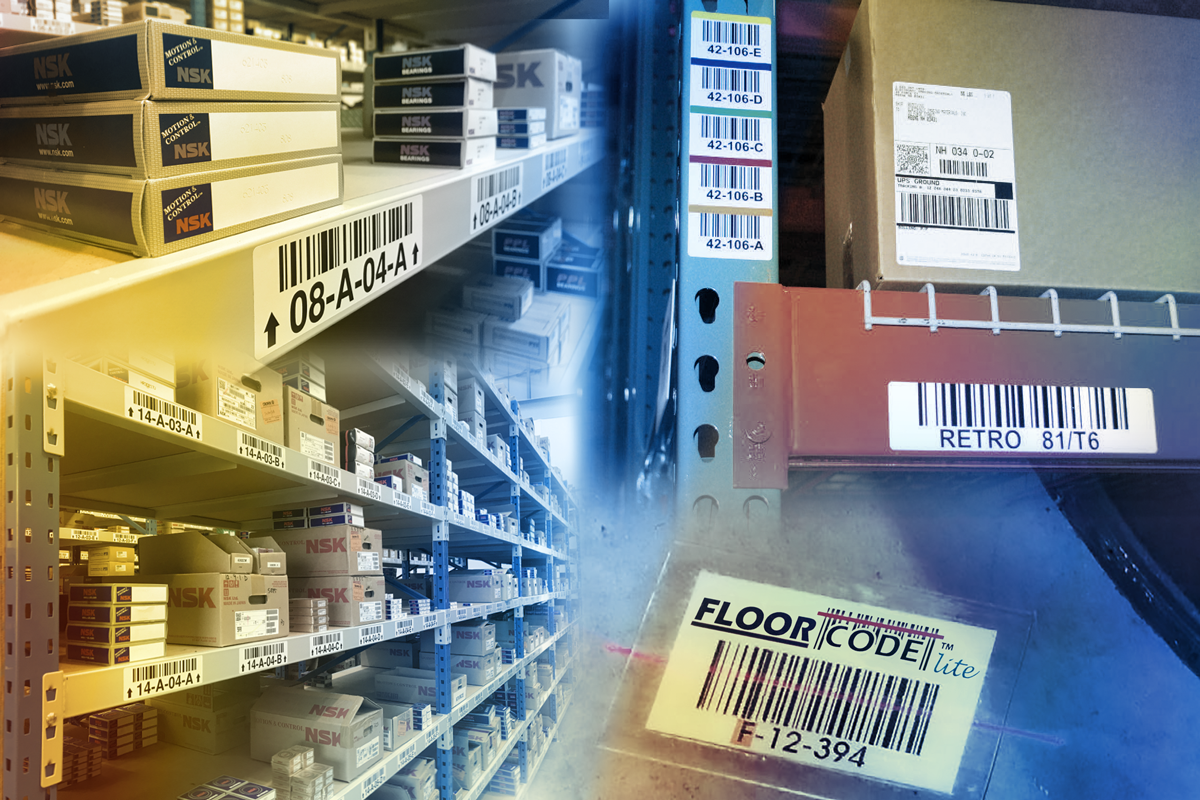Warehouse management is a complex and critical aspect of any supply chain operation. Foundational to a well-organised warehouse is clear labelling, which not only streamlines operations but also enhances accuracy, reduces errors, and improves overall efficiency. In this blog post, we will delve into the world of warehousing, focusing on two essential elements: the placement of labels and the necessity of durable labels.
Understand Your Warehouse Layout
Before you start labelling your warehouse, gaining a deep understanding of your warehouse layout is essential. Sketch a detailed floor plan that includes all storage areas, racks, shelves, aisles, and workstations. Knowing your warehouse inside and out will help you plan your labelling strategy effectively. Saito possesses the experience to assist you in developing a labelling system tailored to your warehouse layout to enhance efficient workflows.
Develop a Labelling System
A well thought-out labelling system is fundamental to clear and efficient warehousing. Label scraping, a tedious and costly task involving the removal of old labels, cleaning adhesive residues, and replacing them with new ones, can result in damage to racking and shelving surfaces, pose safety hazards with sharp tools, and consume time that could be more productively utilised. The best labelling system is one that minimises the need for relabelling, but acknowledging the inevitability of change, it’s beneficial to build flexibility into your system.
Here’s how to create one:
-
Consistency: Maintain uniform labelling methods throughout your warehouse, including font size, colour coding, and label placement. Our repositionable or “permanently removable” Everpeel® labels provide a solution to the scraping dilemma. These labels allow full traceability from rack to product to quality documents, ensuring accurate stock level tracking. They are designed to be easily removed and reapplied without leaving adhesive residue or damaging surfaces. They firmly adhere when in use but can be cleanly peeled off when necessary, making them ideal for the dynamic warehouse environment.
-
Colour Markers: Allocate specific colours to different product categories or storage zones. Saito’s Totem Labels offer an excellent solution, providing ample space for colour blocks and the capability to display information in multiple languages, aiding workers who may speak different languages to navigate the warehouse and locate items.
-
Alphanumeric System: Utilise a combination of letters and numbers for your labels, such as A-01, B-02, C-03 for rack locations and P01, P02, P03 for pallet positions. Saito offers a range of Rack Labels, Bin Labels, and Pallet Labels to standardise the labelling process, enabling workers to find items quickly and efficiently.
-
Barcode Integration: Integrate barcodes into your labelling system for accurate tracking and inventory management. Saito’s retro-reflective labels and signs facilitate long-distance barcode scanning, helping businesses swiftly locate misplaced products.
-
Durability: New Zealand’s harsh weather conditions can damage labels, making them difficult to read. Saito’s Everpeel® Removable Labels are an ideal solution as they are designed to withstand harsh weather conditions and can be easily replaced when necessary. Another tool for enhancing warehouse efficiency is the use of floor codes. Our floor location labels are designed for durability and can withstand forklift traffic, optimising stock movement.
-
Training: Educate your warehouse staff on the labelling system and its significance. Effective communication is vital to ensure that everyone understands and follows the labelling guidelines.
Clear labelling is the backbone of a well-organised and efficient warehouse. By following these guidelines and implementing a thoughtful labelling system with Saito, you can streamline operations, reduce errors, improve accuracy, and enhance the overall efficiency of your warehouse. Remember that warehouse labelling is not a one-time task; it requires ongoing maintenance and adaptation to meet the changing needs of your operation. With a well-labelled warehouse, you’ll be well on your way to achieving optimal efficiency and productivity.
